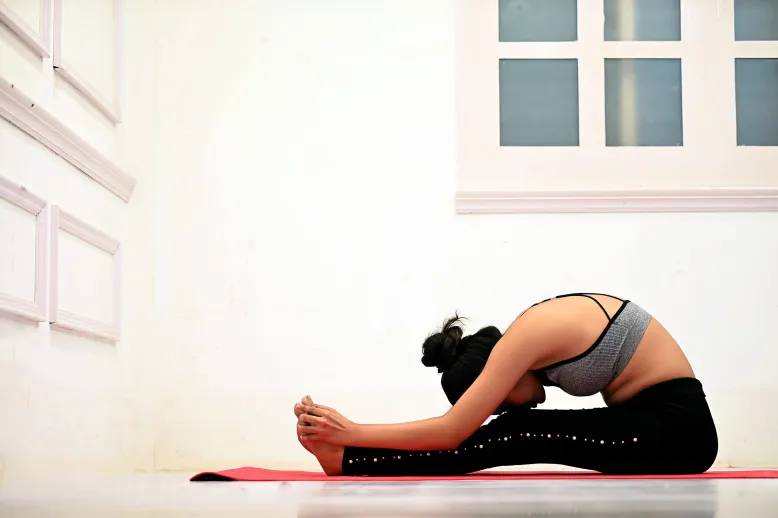
Table of Contents
ToggleNadi Shodhana Pranayama: Breathe Your Way to Harmony and Balance
In the quiet symphony of our being, breath plays the conductor, orchestrating the harmony of mind, body, and spirit. Within this symphony, Nadi Shodhana Pranayama, also known as Alternate Nostril Breathing, emerges as a powerful practice for tuning the instrument of our inner energy. Translated from Sanskrit, Nadi Shodhana means “clearing of the channels,” referring to the belief that this practice purifies the subtle energy pathways (nadis) within the body.
Traditionally, these nadis are said to correspond to the Ida and Pingala, two channels carrying the lunar and solar energies, respectively. Balancing these energies is believed to lead to a state of equilibrium, fostering physical and mental well-being. But the benefits of Nadi Shodhana extend far beyond esoteric teachings, finding validation in modern scientific research.
Benefits of Nadi Shodhana Pranayama
Nadi Shodhana Pranayama involves alternate breaths through the left and right nostrils, employing specific finger configurations known as mudras. This controlled breathing activates the parasympathetic nervous system, leading to a cascade of positive effects:
- Reduced Stress and Anxiety: Nadi Shodhana Pranayama slows down the heart rate and lowers blood pressure, countering the fight-or-flight response triggered by stress. Studies have shown its effectiveness in reducing anxiety and improving mood in individuals with anxiety disorders.
- Improved Focus and Concentration: By increasing oxygen flow to the brain and calming the mind, Nadi Shodhana Pranayama enhances cognitive function and concentration. Research suggests it can improve memory and processing speed.
- Enhanced Sleep Quality: The calming effect of Nadi Shodhana Pranayama promotes deeper sleep and reduces insomnia. Studies have shown that regular practice can significantly improve sleep quality and duration.
- Respiratory Benefits: Nadi Shodhana Pranayama strengthens the diaphragm and improves lung function, leading to greater oxygen intake and better lung capacity. It can also help alleviate respiratory conditions like asthma.
- Detoxification and Immune Boost: By stimulating the lymphatic system, Nadi Shodhana Pranayama aids in detoxification and strengthens the immune system, increasing the body’s ability to fight off infections.
A Beginner's Guide to Nadi Shodhana Pranayama
Ready to experience the transformative power of Nadi Shodhana? Here’s a beginner-friendly guide to get you started:
- Find a comfortable seated position: Sit cross-legged on the floor or a chair with your back straight. Gently close your eyes or gaze softly at a point in front of you.
- Prepare your hands: Form the Vishnu Mudra by resting your middle and index fingers on the palm of your hand, and gently touch the tip of your thumb to the base of your little finger. Alternatively, you can use the Jnana Mudra by extending your index finger and touching it to the tip of your thumb.
- Close your right nostril: Use your right thumb to gently close your right nostril.
- Inhale through the left nostril: Take a slow, deep inhale through your left nostril, filling your lungs.
- Hold the breath: Briefly hold your breath after the inhale.
- Exhale through the right nostril: Open your right nostril and exhale slowly and completely through it.
- Repeat on the other side: Close your left nostril with your ring finger and inhale through the right nostril. Hold, and exhale through the left nostril.
- Continue the cycle: Repeat steps 3-7 for 5-10 minutes, alternating breaths between your nostrils.
Tips for Practice:
- Focus on your breath: Pay attention to the sensations of your breath as it enters and leaves your nostrils. This helps to keep your mind present and prevent distractions.
- Maintain a comfortable pace: Breathe at a pace that feels natural and comfortable for you. Don’t force your breath or strain yourself.
- Extend your practice gradually: As you become more comfortable with Nadi Shodhana, you can gradually increase the duration of your practice to 15-20 minutes.
- Listen to your body: If you experience any discomfort or dizziness, stop the practice and rest.
Nadi Shodhana Pranayama is a simple yet powerful practice that anyone can incorporate into their daily routine. With consistent practice, you can reap the numerous benefits it offers, fostering balance and harmony within your mind, body, and spirit. So, take a deep breath, close one nostril, and embark on your Nadi Shodhana journey. You might be surprised by the transformative power of your own breath.
Remember, Nadi Shodhana Pranayama is a journey, not a destination. Be patient with yourself, enjoy the process, and let your breath





No Comments